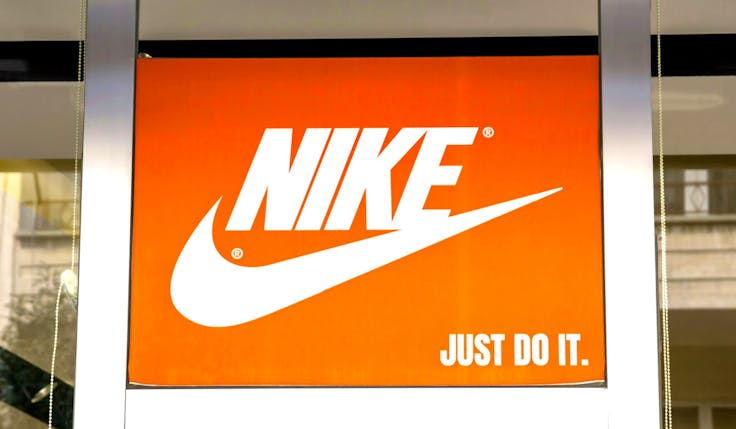Marketers ‘overestimate’ chances of achieving brand loyalty, study finds
A new comprehensive study into the science of loyalty reveals key drivers of consumer behaviour, highlighting how marketers can succeed in the “phenomenally hard” task of engendering loyalty.
 Fewer people are ‘fans’ of brands than marketers may think, according to a new study, which reveals speed, ease and habit trump everything else when it comes to driving loyalty.
Fewer people are ‘fans’ of brands than marketers may think, according to a new study, which reveals speed, ease and habit trump everything else when it comes to driving loyalty.
In fact, just 13% of consumers identify as being a ‘fan’ of a brand, according to the Science of Loyalty research, which defines this as feeling a “deep sense of belonging and attachment”.
By contrast, an overwhelming majority (97%) say speed and ease is the biggest driver of repeat purchases, while 26% claim it is because such purchases are part of a routine.
Over a third (35%) of consumers, meanwhile, say it’s important for brands to make them “feel good”.
According to Richard Shotton, founder of behavioural science agency Astroten and a co-collaborator of the report, brand loyalty – whereby consumers avoid better alternatives out of a sense of obligation or passion – is actually “phenomenally hard” to achieve.
Don’t just target an audience, target their mood“The danger is that marketers overestimate their chances of achieving that and maybe convert their budget into smaller sales rather than pursuing the much simpler goal of habit,” Shotton explains.
The research – carried out by Canvas8 and Intuit Mailchimp and conducted with 4,000 respondents across the UK, US, Australia and Canada – also found that a significant proportion of repurchases (22%) occur simply because a brand or product was readily available, while 40% happen as a result of a customer actively preferring a brand to the others available.
“Often, what we call loyalty is probably much more passive. It’s more like a habit,” adds Shotton. “Rather than genuine loyalty, it’s people repeating behaviours because that’s what they’ve done in the past or it’s too much of a hassle to switch.”
Understanding behaviours and approaches
The report identifies four neurobiological principles of loyalty – reward, memory, emotion and social interaction – which determine what makes a consumer likely to become loyal. For example, while emotional brand experiences foster loyalty, so do brands that acknowledge and reward consumers for their patronage.
As the report notes: “Positive experiences fuelled by dopamine drive repeat behaviour.”
In terms of memory, cognitive bias towards the familiar influences preference, while repeating past behaviour simplifies decision-making.
Additionally, conforming to social behaviours influences decisions, and belonging and community are sought through brand affiliation.
Bloom & Wild focuses on customer retention over acquisition as it chases profitabilityThe report outlines four key customer groups to help marketers understand where their audiences lie. ‘Inert customers’, for example, are likely to choose a brand for convenience, availability, discounts or popularity, while ‘habitual customers’ primarily consider product category over brand.
‘Dedicated customers’ are emotionally engaged with a strong preference for their chosen brand, and ‘fandom customers’ feel that deep sense of belonging and attachment to a particular brand.
Anna Waletzko, an analyst at Canvas8, explains: “Most brands will likely have prospects and customers that span the commitment spectrum, but by better understanding where each target group lies, they are better able to select the right approaches for each.”
Gamification, shared values and personalisation
Focusing on the tactical side of loyalty, gamification and shared values are highlighted as effective methods for boosting loyalty, alongside a variety of other tactics, including peer-to-peer marketing and personalisation.
According to the research, 29% of repeat purchasers said they would like to receive loyalty perks from their preferred brand, yet only 16% have joined a loyalty benefits programme. Gamifying rewards could therefore help to foster a greater sense of achievement and fun.
The three-quarters (74%) of fans who say they share values with their preferred brand (vs 68% of the total sample), meanwhile, indicates brands that align with cultural niches or values are well-placed to build emotional resonance.
Scientific findings should be replicated somewhere other than PowerPointThis must, however, be done authentically and demonstrated through meaningful actions. Anything else could be viewed as ‘purpose-washing’ and risk doing more harm to brands than good.
The data further shows personalised rewards programmes can help to boost satisfaction, with 45% of repeat purchasers liking their preferred brand to provide deals or discounts. Interestingly, though, incentives are not always monetary; almost nine in 10 consumers (87%) said their preferred brand made them “feel good”, cited as another key driver of loyalty.
Encouraging peer-to-peer marketing through gift giving could also help to convert infrequent purchasers into fans. The data shows that 37% of consumers have recommended their preferred brand to friends or family, but only 22% have given it as a gift, highlighting a potential untapped channel for spreading the word about a brand.






